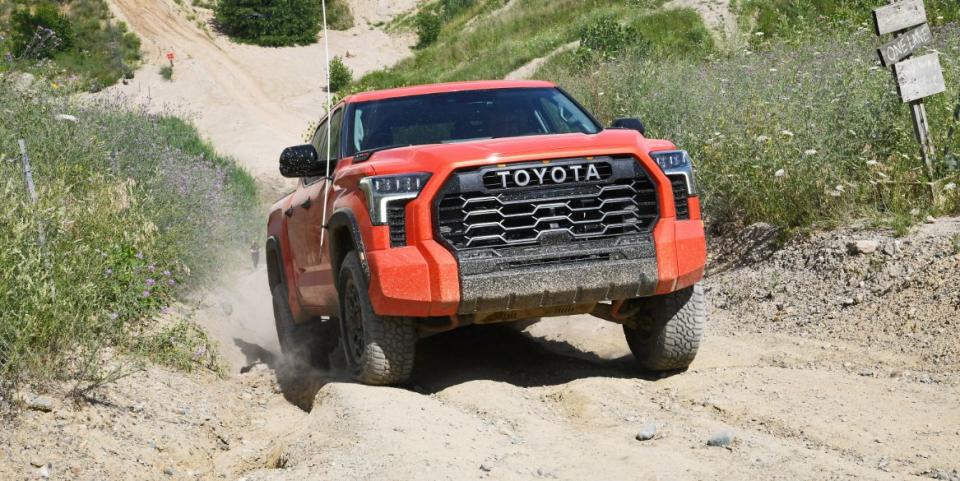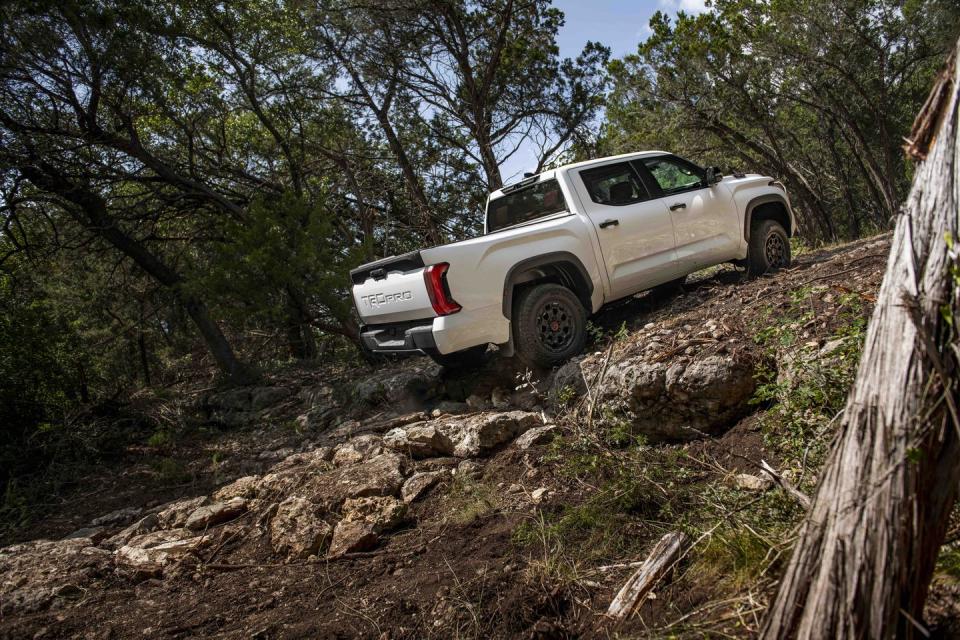Toyota Tundra Sales Outpacing Every Pickup Truck from Detroit

While Tundra sales are growing (15% for the first eight months), its Detroit rivals are down for the same period—18% for Ram 1500, 15% for GMC Sierra, 11% for Chevrolet Silverado, and 10% for Ford F-Series.
Toyota is positioning the redesigned truck for all purposes, but especially recreation—off-roading and towing of campers, boats, and motorcycle trailers.
The Tundra’s new hybrid powertrain was more than competent while creeping on undulating dusty trails, but a day of off-roading was not the best way to judge its efficiency.
Over and over, Toyota has demonstrated its commitment to long-term strategies, maintaining that persistent hard work is better than wishing for overnight success. Still, patience must be wearing thin in Toyota City as the third-generation Tundra full-size pickup truck finishes its first eight months in the US market, still lagging far behind Detroit-bred competitors.
The new Tundra launched in November at Toyota’s plant in San Antonio, Texas, and US sales have topped 64,702 units from January to August. That represents 15% growth over the same period a year ago, when the plant was winding down production of the previous-generation Tundra.
But here’s an interesting twist: While Tundra sales are growing (perhaps as expected for an all-new model), its Detroit rivals are down for the first eight months of US sales—18% for Ram 1500, 15% for GMC Sierra, 11% for Chevrolet Silverado, and 10% for Ford F-Series, according to Wards Intelligence data.

Slicing the sales numbers more finely, from June to August, only the Ford F-150 (including Lightning EV) and Toyota Tundra have gained share among full-size pickups, while Chevy, GMC, and Ram are down. Perhaps the Tundra’s rising sales are pegged to the spring rollout of the 437-hp i-Force Max hybrid variant, which the automaker predicted would make up about 25% of all Tundra sales. In July, the hybrid comprised 19% of Tundra sales, the automaker reports.
These numbers might provide a little encouragement to Toyota management, but a wide gap remains between Tundra sales and those of its rivals: After eight months, the F-Series, for instance, continues outselling the Tundra by about 6 to 1, driving home the point that the Tundra has a long way to go before becoming truly competitive. Another factor in truck sales is fuel prices, which have retreated from a $5-a-gallon recent high, but nonetheless have encouraged more shopping of smaller midsize pickups, as Cox Automotive notes.


 Yahoo Autos
Yahoo Autos 